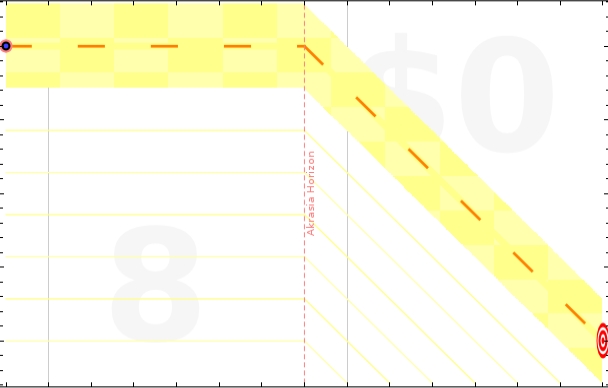Here is another article I wrote some years ago. This formed the basis for the concept of the Current Initiative in “Do It Tomorrow”.
Do you have lots of great ideas for projects but never get round to starting them?
Do you have a host of old projects that you got so far with and then ran out of steam?
Or do you find yourself saying things like “I really must do some more marketing, but I can never find the time”? (Translation: “I’m not doing the really important work because the less important work is more important!”)
I’m going to tell you a method now which will enable you to give any project your best shot. I can’t of course guarantee that your project will succeed, but at least if you use this method you won’t fail because you have let yourself down.
But be warned: you can only use it on one project at a time!
The basic idea is simplicity itself. You can keep any project moving powerfully forward if you take some action on it first thing every day.
Let’s analyse that a bit further. There are three elements:
1) Take some action
2) First thing
3) Every day
Let’s deal with each of those in more detail.
1) Take some action
You need to take some action, not just think about taking some action! It doesn’t matter how small the action is. The important thing is to get started. I’ve written before about how a simple phrase like “I’ll just get the file out” can be the trigger for getting into a difficult or daunting task.
How much action do you need to take? It doesn’t matter. Just as long as you take some action, it will keep the project alive. When people come to me with writer’s block, I usually set them the the target of writing for at least 10 minutes every day. Al Secunda in his book “The 15-second Principle” makes it even less — he says a minimum of 15 seconds work a day on any project will bring it to fruition.
Of course Al is not telling you to work for only 15 seconds. He is telling you to work for at least 15 seconds. Once you have succeeded in getting started, most days you will go on and do some significant work on the project. But even if you don’t do more than the minimum, you will have kept the project alive in your mind and you will find that you naturally get into the swing of it in the next day or so.
2) First thing
In my book “Get Everything Done and Still Have Time to Play” I give an exercise in which you are asked to select one task that you are going to do the next day. If you succeed, you then select a slightly more difficult task for the next day. If you fail, you select an easier one.
This sounds an incredibly easy exercise, but the truth is that most people find it almost impossible to keep it going for more than a few days. Yes, it’s rather a horrifying thought — most people are incapable of selecting just one new task a day and doing it without fail!
Your project is going to get lost in the same way unless you make sure that you do it first thing before doing anything else. You know exactly what will happen if you don’t do it first thing. You will find yourself late in the day saying: “It’s nearly time to stop work and I haven’t done a thing about that project yet. It’s not worth doing anything now. I’ll give it a really good go tomorrow.” Guess what happens tomorrow!
I have learnt the hard way that if I want to carry out some particular task every day over an extended period — such as writing, going for a run, whatever it may be — it has to be got under way before I have my breakfast, before I make a cup of tea, before I look at the newspaper. If you work in an office, then the task needs to be started before you check your e-mail, before you talk to your colleagues, before you listen to your voicemail. The second that you say “I must get started on that project, but I’ll just check whether there’s anything new in my in-box” you’ve lost the battle!
Once you’ve got going, you will find that most days there is a natural tendency to keep going. And if some days there isn’t, so what? As long as you’ve done something, you will find it is easier to do more the next day. And that brings me on to my next point.
3) Every day
When someone tells me that they are stuck on a project, the first question which I ask them is “When did you last do some work on it?” Invariably it turns out to have been weeks ago.
Once you stop working on something, it will start to die. Think of your projects as house plants which need watering daily. They don’t need a lot of water, but they do need some. If you forget to water them for one day it won’t be fatal, but forget to water them for several days in a row and they will start to wither. Yet sometimes even the most dead-looking plant will revive if you resume the daily watering. And so it is with projects. If you have a project in your life which is really stuck, try doing some work on it first thing every day and you will be amazed to see how it starts to move forward.
When I say “every day” I mean every working day. For some personal projects you may want to do seven days a week, but for most work projects five days a week is fine. There may be days during the week when you know you are not going to be able to do any work on the project. You might for instance be away at a business conference. The important thing is to identify these days in advance. And what’s the first thing you do when you get back into your office after your conference? Yes, you’ve got it!
On days which you haven’t identified in advance don’t accept any excuses from yourself. The most common justification that I hear is that an “emergency” came up. I’m not saying there aren’t occasional unforeseeable life-or-death situations in which you have to take immediate action to avoid a catastrophe. But be honest with yourself: how often does that really happen? Most of our so-called “emergencies” aren’t emergencies at all. They are simply situations which we have neglected so long that they have come back to bite us.
********
So there you are: that’s it. Follow the principle of taking some action on your project first thing every day, and you will be amazed to see how the project comes to life and progresses almost like magic. But remember what I said at the beginning: you can only do this with one project at a time!
So how do you decide which project you are going to use this method on? Ask yourself some questions, such as:
What’s the project that I have been putting off longest?
What am I most stuck at?
What would make the greatest difference to my life and work?
What would really take my life or business forward if I took action on it?
Concentrating on one project at a time is a very good time management principle. You may remember that old music-hall turn, the Chinese spinning plates. The performer has a huge number of bamboo rods and the aim is to get a plate spinning on the end of each rod. A good performer can get thirty or more plates spinning at the same time. The way it is done is to get one plate spinning properly, then to move on to the next plate, then to the next. Go back to an earlier plate only when it starts to wobble.
It’s exactly the same in your life or business. Get one project up and running properly before you take on the next. That is far the best way to move forward.
********
Reading this article won’t make the slightest bit of difference to your life unless you do something about it. What you need to do now is to decide on one project which you are going to do first thing tomorrow and every day thereafter until it is fully up and running. If you want to reinforce your decision, feel free to e-mail me ( mf@markforster.net ) to tell me what it is, and I will e-mail you in two weeks time to ask how you got on!
 Sunday, February 12, 2012 at 20:51
Sunday, February 12, 2012 at 20:51 







